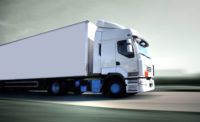Combatting intrusion, theft and terrorism on railways with security and surveillance technology

Rail infrastructure is a fundamental component of the United States economy and transportation system; in many ways, it is the lifeblood of the economy. For example, US freight rail alone supports approximately 1.1 million jobs, directly generates $219 billion in economic output and $26 billion in tax revenues, and millions more Americans indirectly benefit by working in competitive industries, thanks to the affordability and productivity of freight railroads. That impact is not limited to the United States; passenger and freight traffic combined are expected to double globally by 2050, so the criticality of protecting rail infrastructure will only grow in step with its usage.
Protecting rail infrastructure does not come without its challenges, however. Rail assets are uniquely complex environments with countless variables that are spread across a vast geographic area. Rail operators routinely face a wide array of hazards. Although there is a litany of natural incidents they must be cognizant of, unfortunately, there are also many intentional human security hazards that must be addressed, lest disaster strike.
Security incidents that affect railways usually fall into one of three categories: intrusion, theft, or terrorism. To keep passengers and freight safe, there must be significant efforts towards maintaining the physical security of railways. It is critical that rail organizations take action to ensure they are making safety and security a top priority by embracing innovative technologies that help mitigate these threats to public safety.
Intrusion is a serious issue in the rail industry as trespassing along railroads’ rights-of-way is the leading cause of rail-related deaths in America. Nationally, more than 400 trespass fatalities and nearly as many injuries occur each year. While not all instances of trespassing lead to injury or death, they all lead to disruption. When people trespass on railways and vandalize property, the railway must be evaluated to ensure there is no major damage or maintenance required before allowing the trains to resume running. This creates delays and costs to repair any damage.
With regard to theft, cable theft, in particular, is currently plaguing the rail industry due to economic instability coupled with higher commodity prices. For rail operators, cable theft can lead to severe delays and costly consequences. In the United Kingdom, cable theft was responsible for nearly 22,000 hours of passenger delays in the past four years, resulting in costs of more than $80 million. Railway networks are designed to be fail safe; therefore, trains are brought to a complete stop when a cable is cut. While this protects passengers, it also leads to long and aggravating delays as the cable is replaced. Not only is cable theft disruptive for passengers and railway operators, but it is potentially fatal for the perpetrator. There are thousands of volts of electricity running through cables, and any interference with them is extremely dangerous. When examining the dangers, resulting downtime, product replacement cost, and additional labor expenses, it becomes clear why cable theft is such a serious and costly issue that must be addressed.
Another challenge, with potentially catastrophic consequences, is terrorism. Rail operators need the necessary tools to combat interference with rail infrastructure and its assets. Between 1970 and the end of 2017, there were 282 attempts to deliberately derail trains and 817 additional attacks on railway infrastructure, including tracks, bridges, tunnels, signaling, and other right-of-way equipment. Of the 282 attempts to derail trains, 118 (or 42%) resulted in a derailment.
It is clear that railways have a broad spectrum of needs and challenges, and preventing intrusion, theft, and terrorism on railways must be a fundamental component of rail safety efforts. Operators need an integrated range of security and surveillance technologies to detect, assess, and respond to threats faster and collaborate with outside organizations as needed.
Emerging technologies, such as 3D surveillance systems, can be united with security, dispatching, and collaboration software to address the entire lifecycle of an incident. The combination of fixed and mobile sensors on trains, tracks and other infrastructure integrated with artificial intelligence enables the highest levels of monitoring through automated detection of anomalies and potential safety impacts.
The Březno tunnel, the second-longest Czech railway tunnel, is implementing a security system based on LiDAR detection of moving objects. When it senses movement, cameras point directly to the alarm origin and follow the intruder. This enables targets to be viewed from multiple angles autonomously without an operator’s intervention.
When a security incident has been detected, operators can leverage dispatch and collaboration software for managing the response. For example, the Emergency Response System of the Gotthard Base Tunnel, the world’s longest tunnel, includes dispatching software that supports operating personnel via checklists, situation plans and instructions to schedule and mobilize intervention teams.
Rail networks are continuing to expand, such as in the United States, which recently passed a $1.2 billion infrastructure bill that included significant funding for rail. But more rail infrastructure means there are more steps needed to address potential attempts at intrusion, theft, and terrorism. Rail operators must rise to the challenge of providing safe and efficient passage of lives and property.
Looking for a reprint of this article?
From high-res PDFs to custom plaques, order your copy today!





